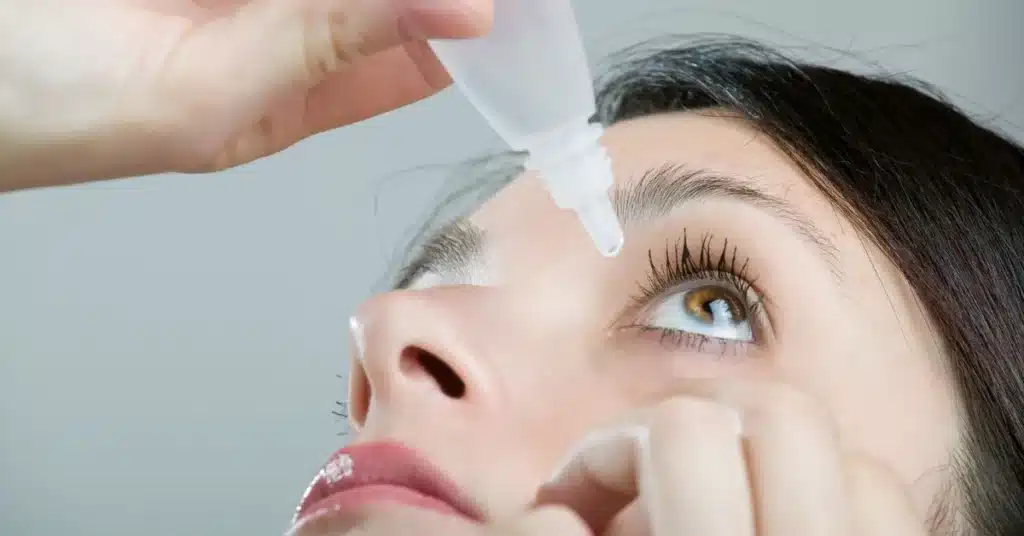Understanding Narrow-Angle Glaucoma: A Silent Threat to Vision
Glaucoma is a severe eye condition that can lead to vision loss before noticeable symptoms appear.
It is the major cause of irreversible blindness worldwide, affecting millions of people, particularly those aged 70 and above.
The most common form of Glaucoma is increased intraocular pressure (IOP).
Still, a lesser-known but equally dangerous type is known as Narrow-Angle Glaucoma (NAG).
NAG occurs when the drainage angle formed by the iris and cornea becomes blocked.
It can cause a backup of fluid within the eye and increase intraocular pressure.
This article will delve into Narrow-Angle Glaucoma, its causes, symptoms, the importance of early detection and treatment.
Narrow-Angle Glaucoma
Narrow-angle Glaucoma, also known as angle-closure Glaucoma, is a less common but extremely critical subtype of Glaucoma.
It develops suddenly and can lead to rapid and permanent loss of vision.
Though it accounts for less than 10% of all Glaucoma diagnoses, it can cause severe pain and immediate vision impairment.
The condition arises when the drainage angle inside the eye, which allows fluid to exit the eye, becomes blocked.
This blockage results in a sudden and significant increase in intraocular pressure, causing immediate damage to the optic nerve.
Types of Narrow-Angle Glaucoma
There are two types of Narrow-Angle Glaucoma:
Acute NAG
Acute NAG occurs when the drainage angle is abruptly closed off, preventing the normal flow of aqueous humor within the eye.
The normal flow gets interrupted by the size of the lens and the iris being too close to the lens.
Chronic NAG
In contrast, chronic NAG develops slowly as the drainage angle narrows gradually.Â
This condition damages the optic nerve without obvious symptoms.
Symptoms of Narrow-Angle Glaucoma

Individuals may not experience symptoms until they are in the midst of an acute attack.
Early signs of an attack can include:
- Nausea
- Eye pain
- Red eyes
- Headache
- Blurred vision
- Mid-dilated pupil
- Halos around lights
- Sudden loss of vision
- Sudden severe eye and head pain
Causes of Narrow-Angle Glaucoma
Narrow-angle glaucoma is primarily attributed to a condition known as pupillary block.
Aqueous humor, the fluid inside the eye, pushes the pupil forward, narrowing the drainage angle.
Additionally, it is often associated with specific conditions and factors, including:
Plateau Iris
Plateau iris is a structural abnormality in the ciliary body, located behind the iris, that produces aqueous fluid in the eye.
When the ciliary body is positioned too far forward, it can push the peripheral iris forward, further reducing the drainage angle.
Tumors and other eye disorders
Tumors behind the iris can block the drainage angle and lead to Narrow-angle Glaucoma.
Various eye disorders such as Cataracts, Diabetic renopathy, ectopic lens, and Uveitis can also contribute to this condition.
Surgery
Structural changes to the eye resulting from surgical procedures can occasionally lead to Narrow-Angle Glaucoma.
Medication
Certain over-the-counter and prescription medications may increase the risk of narrow-angle Glaucoma.
For instance, antihistamines and antidepressants can affect the position of the lens-iris diaphragm.
Topiramate, used for migraine, epilepsy, and weight loss, can cause lens and ciliary body swelling.
Risk Factors for Narrow-Angle Glaucoma
Various risk factors can increase an individual’s likelihood of developing this eye disorder.
Here are the key risk factors associated with narrow-angle Glaucoma:
- Farsightedness: Individuals who are farsighted (hyperopic) have an increased risk of narrow-angle Glaucoma
- Age: Advancing age is a significant risk for Narrow-Angle Glaucoma. As individuals grow older, changes in the anatomy of the eye can occur, making them more susceptible
- Race: Asians and Inuit people have a greater risk because they often have a shallow anterior chamber and narrower angles within the eye
- Sex: Women are more prone to developing the condition than men
- Shallow peripheral anterior chamber: When the front part of the eye, known as the anterior chamber, is smaller in size, it increases the chances of the angle inside the eye closing off
- Family history: The influence of genetic factors in eye conditions like NAG is an ongoing area of research, and its role as a risk factor may vary among individuals
Diagnosis of Narrow-Angle Glaucoma
A comprehensive eye examination is essential for diagnosing narrow-angle Glaucoma. Eye doctors employ various diagnostic tests, including:
- Gonioscopy: This procedure involves using a special contact lens called a gonioprism to assess the angle between the cornea and iris, determining whether it is narrow
- Anterior Segment Optical Coherence Tomography (AS-OCT): AS-OCT provides detailed images of the eye’s anterior segment, helping doctors visualize the drainage angle and identify blockages or abnormalities
- Ultrasound Biomicroscopy: Combining light and a low-power microscope, this imaging technology offers detailed views of the eye’s filtering structure
Treatment options for Narrow-Angle Glaucoma
Early intervention is crucial for managing narrow-angle Glaucoma effectively. Treatment options include:
Eye drops

Beta-blockers and Miotics are commonly prescribed eye drops.
While Beta-blockers are often the first choice, as they are affordable and have relatively few side effects, and Miotics help lower eye pressure by improving fluid drainage.
Cataract surgery
Cataract surgery can sometimes effectively lower intraocular pressure in Narrow-Angle Glaucoma patients.
Iridotomy
This laser surgery involves creating a small hole in the iris to enhance fluid outflow, reducing eye pressure and the risk of angle closure.
It can also be used preventively in individuals at risk of developing narrow-angle Glaucoma.
Iridoplasty
Iridoplasty uses a laser to shrink the iris away from the drainage angle and is typically performed when further intervention is needed.
Conclusion
Narrow-angle Glaucoma is a serious eye condition that requires prompt treatment to prevent vision loss.
While it may constitute a smaller percentage of Glaucoma cases, its severity cannot be understated.
The symptoms of NAG, including nausea, eye pain, redness, headaches, and halos around lights, are all red flags that prompt immediate action.
Timely diagnosis through specialized tests like gonioscopy, AS-OCT, and ultrasound biomicroscopy can make all the difference in preserving one’s eyesight.
The treatment options are eye drops, cataract surgery, iridotomy, and iridoplasty.
With the right medical care, individuals diagnosed with NAG can enjoy clear vision and a higher quality of life.
Regular eye check-ups and prompt attention to symptoms are our best defenses against this sight-stealing condition.
Frequently Asked Questions
How does Narrow-Angle Glaucoma differ from other forms of Glaucoma?
Narrow-angle Glaucoma differs from other types of Glaucoma in terms of its sudden onset and the immediate risk to vision. Unlike more common forms, it can cause acute attacks with noticeable symptoms.
Can Narrow-Angle Glaucoma be treated?
Yes, early intervention is crucial for managing Narrow-Angle Glaucoma. Treatment options include prescribed eye drops, cataract surgery, iridotomy, and iridoplasty. They aim to reduce intraocular pressure and prevent further vision loss.
How can I prevent Narrow-Angle Glaucoma?
Preventing Narrow-Angle Glaucoma starts with regular eye check-ups, especially if you have risk factors. Awareness of symptoms and seeking immediate medical attention when they occur is also essential in preventing vision loss.
Is Narrow-Angle Glaucoma a common condition?
Narrow-angle glaucoma accounts for less than 10% of all Glaucoma diagnoses, making it less common than other forms of the condition. However, its potential for severe vision impairment makes it a significant concern.
WowRx uses only high-quality sources while writing our articles. Please read our content information policy to know more about how we keep our content reliable and trustworthy.






